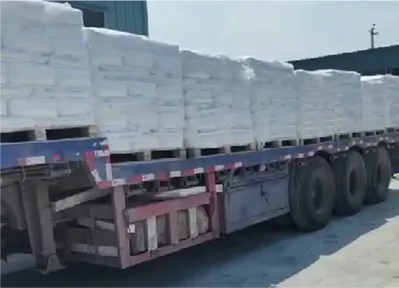
ก.ย. . 15, 2025 09:35 กลับไปที่รายการ
Rutile vs Anatase: Which Titanium Dioxide is Better for Waterborne Paints?
The paint industry's shift toward waterborne formulations has intensified scrutiny on titanium dioxide powder performance. As manufacturers seek titanium dioxide powder for sale, they face a critical choice between two crystalline forms: rutile and anatase. Both varieties available from ซัพพลายเออร์ผงไทเทเนียมไดออกไซด์ share the same chemical composition but exhibit markedly different characteristics in water-based paints. The selection between these forms impacts everything from dispersion stability to final film properties, making this decision fundamental to paint formulation success.

Titanium Dioxide's Fundamental Differences in Crystal Structures
At the molecular level, rutile and anatase titanium dioxide powders arrange their atoms in distinct lattice configurations. Rutile's more compact structure gives it greater density and higher refractive index (2.7 vs. anatase's 2.55), directly affecting light-scattering efficiency. Titanium dioxide powder suppliers emphasize this structural difference when recommending products for specific applications. The tighter packing of rutile crystals makes them more resistant to photocatalytic activity - a crucial factor for exterior paints exposed to sunlight. Anatase's more open structure, while less durable, offers certain processing advantages in waterborne systems that merit consideration.
Titanium Dioxide's Optical Performance: Hiding Power and Brightness
When evaluating titanium dioxide powder for waterborne paints, optical properties take center stage. Rutile's superior refractive index translates to approximately 20-30% greater hiding power than anatase at equal concentrations. This efficiency advantage means formulators can often use less rutile titanium dioxide powder to achieve target opacity, potentially offsetting its higher cost. However, the color of titanium oxide differs subtly between the forms - anatase typically appears bluer and brighter in mass tone, which some formulators prefer for certain white paint applications. In tinted systems, rutile's neutral undertone generally provides cleaner color development, though anatase can offer advantages in specific pastel shades.
ไททาเนียมไดออกไซด์: Dispersion Characteristics in Waterborne Paints
The performance of titanium dioxide powder in waterborne systems heavily depends on dispersion quality. Anatase's softer crystal structure generally disperses more easily in aqueous media, requiring less milling energy to achieve optimal particle separation. Many ซัพพลายเออร์ผงไทเทเนียมไดออกไซด์ highlight this characteristic when recommending anatase for certain low-VOC formulations where dispersion aids are limited. Rutile grades, while more challenging to disperse, have seen significant improvements through advanced surface treatments. Modern rutile titanium dioxide powders often incorporate specialized coatings that enhance their water compatibility without sacrificing durability. The dispersion process affects not just application properties but also long-term stability - poorly dispersed particles can lead to flooding and floating issues in the final paint film.
Titanium Dioxide's Durability and Weathering Resistance
For exterior waterborne paints, the durability gap between rutile and anatase titanium dioxide powders becomes decisive. Rutile's crystalline structure demonstrates far greater resistance to UV-induced photocatalytic degradation, making it the unanimous choice for coatings requiring long-term weathering performance. The color of titanium oxide in rutile-based paints remains stable for years, while anatase formulations tend to chalk and degrade more rapidly. Titanium dioxide powder suppliers have developed rutile grades with enhanced surface treatments that further improve weatherability by passivating surface hydroxyl groups responsible for photocatalytic activity. These treatments make modern rutile titanium dioxide powder for waterborne paints particularly effective in harsh climates where UV exposure and moisture combine to challenge coating integrity.
Photocatalytic Activity Considerations ของ ไททาเนียมไดออกไซด์
The photocatalytic behavior of titanium dioxide powder presents both challenges and opportunities for waterborne paint formulators. Anatase's more active surface catalyzes oxidation reactions more readily than rutile, contributing to faster binder degradation in exterior applications. However, this same property makes anatase titanium dioxide powder valuable in certain "self-cleaning" interior paints where controlled oxidation of surface contaminants is desired. Leading ซัพพลายเออร์ผงไทเทเนียมไดออกไซด์ now offer low-photocatalytic rutile grades that minimize this effect while maintaining excellent optical properties. The color of titanium oxide can shift differently in each crystal form during UV exposure, with anatase showing more pronounced yellowing in accelerated weathering tests.
Titanium Dioxide's Environmental and Regulatory Aspects
Modern ซัพพลายเออร์ผงไทเทเนียมไดออกไซด์ must navigate increasingly complex regulatory landscapes for both crystal forms. Recent classifications of titanium dioxide as a potential inhalation hazard have prompted innovations in dust-suppressed forms and safer handling formulations. Waterborne paints benefit from both rutile and anatase titanium dioxide powders that incorporate surface treatments improving their environmental profile. The color of titanium oxide remains non-toxic in both forms, but their different photocatalytic activities influence ecotoxicity profiles. Rutile's lower reactivity generally makes it preferable for applications where environmental impact is a concern, particularly in exterior paints that may contribute to runoff. Some European manufacturers now favor rutile titanium dioxide powder for its alignment with circular economy principles due to its extended service life in coatings.
Application-Specific Recommendations ของ ไททาเนียมไดออกไซด์
Choosing between rutile and anatase titanium dioxide powder ultimately depends on the waterborne paint's intended use. For interior flat and matte finishes where maximum brightness and easy dispersion are priorities, anatase remains competitive. Its bluer undertone can enhance perceived whiteness in indoor environments protected from UV exposure. However, nearly all exterior and high-performance interior waterborne paints now utilize rutile titanium dioxide powder as the standard. Titanium dioxide powder suppliers have developed rutile grades specifically optimized for waterborne systems, featuring organic surface treatments that improve wetting and dispersion in aqueous media while maintaining the crystal's inherent durability advantages.
-
Application of Titanium Dioxide 2195 in Water Purification
ข่าวNov.14,2025
-
What are the global market trends of Titanox titanium dioxide in recent years
ข่าวNov.14,2025
-
Effect of particle size distribution on the optical properties of R996 TiO2
ข่าวNov.14,2025
-
Latest Technological Innovations in Rutile Titanium Dioxide Manufacturing
ข่าวNov.14,2025
-
Compatibility of Titanium Dioxide Concrete Pigment with Different Concrete Admixtures
ข่าวNov.14,2025
-
Environmental Impact of Titanium Dioxide Pigment Manufacturing and Mitigation Measures
ข่าวNov.14,2025
